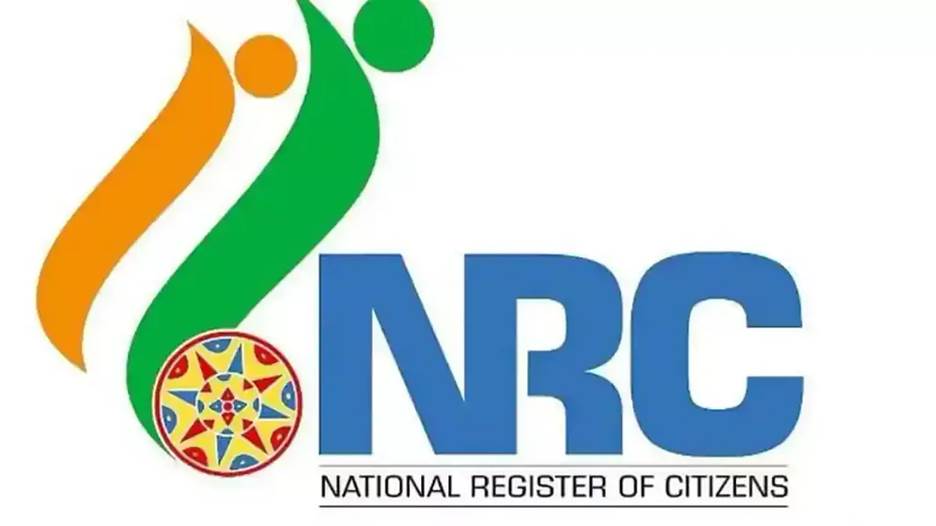Description

Copyright infringement not intended
In News
- Recently, the Manipur state legislative Assembly decided to implement the National Register of Citizens (NRC) and establish a State Population Commission (SPC).
- Over the period, many dozen organisations, most of them tribal, were demanding an Assam-like NRC to protect the indigenous people from the invasion by “non-local residents”.
Background
- Since independence, the northeastern States have remained concerned about “outsiders”, “foreigners” or “alien cultures” crushing their numerically weaker indigenous communities.
- The State of Manipur is the home to 3 major ethnic groups;
- Non-tribal Meitei people concentrated in the Imphal Valley, the central part of Manipur.
- Tribal Naga and Kuki-Zomi groups mostly inhabit the hills around.
- There is a long history of conflict among these three groups.
- The NRC issue has put the Meiteis and the Nagas on the same side. Both of them claim that an NRC is required because the political crisis in neighbouring country Myanmar has pushed hundreds of people into Manipur.
- As Manipur share a 398-km international border with Myanmar.
- In 2019, Manipur became the 4th northeastern State to be brought under the inner-line permit (ILP) system after Arunachal Pradesh, Mizoram and Nagaland.
- ILP is a temporary official travel document to allow domestic travel of an Indian citizen into a protected area.
- ILP is implemented under the British-era Bengal Eastern Frontier Regulation.
- The pro-NRC organisations said Manipur did have a strong pass or permit system that regulated the entry and settlement of outsiders. But that was abolished in 1950, a year after Manipur’s merger with the Union of India.
- This led to an increase in the population of non-indigenous people.
- In the 1980s, a movement was started for the detection and deportation of foreigners from Manipur, following which the State government of Manipur signed two agreements by fixing 1951 as the base year for identifying the non-residents and evicting them.
- Latter the state government approved 1961 as the base year for identifying the “natives” for ILP.
- Most groups are not happy with this new cut-off year and demand 1951 as the cut-off year for the NRC exercise.
Demography of Manipur
- As compared to the corresponding national growth rate of 87.67% and 120% respectively.
- The population growth rates in the Manipur hill districts were 153.3% between 1971 and 2001 and 250.9% between 2001 and 2011.
- In the case of the valley districts, the growth rate was 94.8% and 125.4% during these periods.
- The strange population growth rates in the hill districts reflect a strong possibility of a huge influx of outsiders and non-Indians.

Concern
- Kukis community, Nepalis (Gurkhas), etc are viewed as demographic invaders.
- An NRC implemented with 1961 or 1951 as the cut-off year would also affect some indigenous Meiteis and Nagas too.
- The major worry for the Kukis community is the possibility of ethnic cleansing by Naga extremist groups.
Status of the NRC in India
- Assam is the only State in India that initiated an exercise to update the NRC of 1951 with March 24, 1971, as the cut-off date for citizenship.
- This date was decided in the Assam Accord of 1985 which ended a six-year anti-foreigners movement.
- It contained a provision that all ‘foreigners’ who came to Assam after 1971 Should be detected and deported, and also talked about the deletion of foreigners' names from the electoral rolls.
- Citizenship Act of 1955 was amended for Indian-origin People who came from Bangladesh before 1966 to be deemed as Citizens.
- Those who came between 1966 and 1971 were eligible for Citizenship after registering and living in the State for 10 years while those entering after 1971, were to be deported.
- In 2014, Supreme Court asked the State government to update the 1951 NRC in a time-bound manner under the supervision of the Supreme Court.
- The complete draft of the Assam NRC was published in August 2019, excluding 19.06 lakh out of 3.3 crore applicants, some indigenous groups have refused to accept the current draft.
- Their petitions for re-verification of the NRC to weed out “Bangladeshis” are pending before the Supreme Court of India.
- Nagaland attempted a similar exercise called RIIN (Register of Indigenous Inhabitants of Nagaland) in June 2019 to primarily sift the indigenous Nagas from the non-indigenous Nagas.
- The decision was seen against the Nagas, and after a widespread protest, it was postponed.
https://epaper.thehindu.com/Home/ShareArticle?OrgId=G6HA4JPQD.1&imageview=0
https://t.me/+hJqMV1O0se03Njk9















